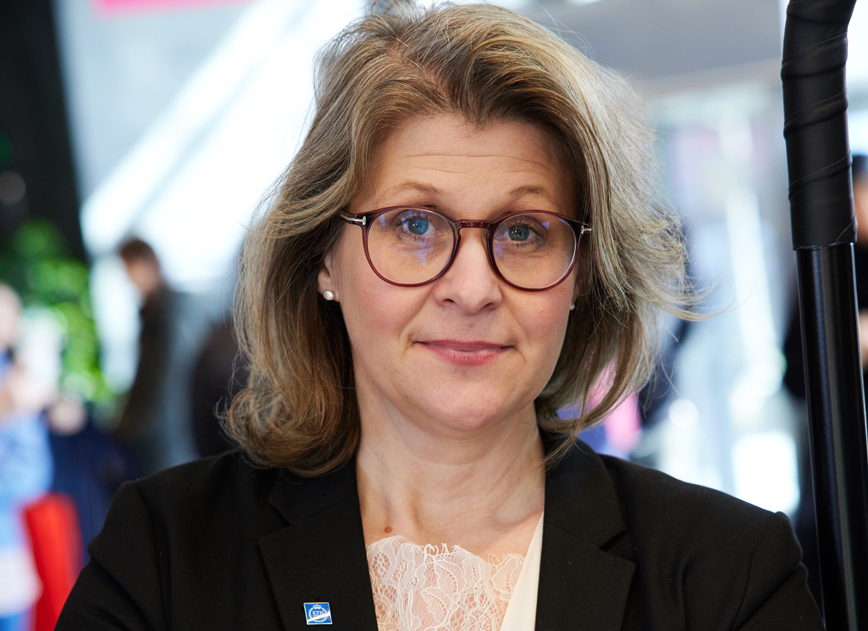The Swedish innovation system needs more long-term funding

The international conference, THE Innovation and Impact Summit 2022, arranged by KTH and the ranking institute Times Higher Education (THE), opened today and will continue until Thursday. Lisa Ericsson, head of the innovation office KTH Innovation, believes that Sweden has a good innovation climate but needs more long-lasting funding for complex projects.
She chaired the first panel discussion at the conference's opening plenary session, focusing on the theme of how universities and industry can create a national innovation culture. The panel included Scania’s CEO Christian Levin and EIT Innoenergy’s CEO Diego Pavia. They discussed issues such as the importance of national goals when it comes to creating an innovation ecosystem and whether we are standing on the verge of a rapid growth of European unicorn companies, that is, start-up companies that are valued at over a billion dollars.
Sweden has good, successful innovation culture with innovation offices at every university andwith a strong start-up environment, not least in Stockholm, Ericsson says.. A number of rapidly-growing companies with digital solutions – like Spotify and Klarna – have emerged here, which gives the city the epithet Europe’s Silicon Valley.
“Stockholm is a vibrant innovation hub. We see this not least at KTH Innovation where we have around 350 ideas from researchers and students every year," she says.
Long-term capital needed
For companies that work with digital innovations that can brought to market relatively quickly, the Swedish innovation system works excellently. But for more research-heavy businesses, with solutions that meet global challenges and which take a long time to develop, another kind of funding is needed than those currently available,” she says.
“Long-term funding is required for the more complex, rather difficult projects such as those concerning hydrogen and fossil-free steel. This type of financing does not exist to any great extent in Sweden and this is a hindrance,” Ericsson says.
Funding of this kind is available for example in the USA, the United Kingdom and Germany, according to Ericsson. She notes that Sweden could produce significantly more research-heavy, so-called deep tech companies if we had it.
“Here, evergreen-like initiatives would be needed, for example through the already university-affiliated holding companies, which would bring in long-term venture capital,” Ericsson says.
A mix of researchers and students
The activities she leads at KTH Innovation are partly the result of the investment made by the Swedish government in 2008 so that all Swedish universities would have an innovation office. KTH has already started such an organisation the year before and today provides innovation support to hundreds of researchers and students.
“The fact that we mix researchers and students makes us quite unique in Sweden. It is the quality of the ideas that should govern, whether it is a Master´s student, a PhD student or a professor who is behind them,” Ericsson says.
“One of the best foundations for innovation is to mix people from different backgrounds and different perspectives and provide them with a platform to meet and be creative. It is really great when we can get a professor to sit down and have a discussion with some students from another field.”
Impact is to do with more than new companies
In the end, it is about impact, the societal impact that the ideas that go through the innovation system has. A further theme of the THE Innovation and Impact Summer 2022 is how universities contribute to this.
When it comes to impact, it is often about hard numbers, how many companies have emerged, Ericsson says. Indeed, several ideas that have gone through KTH Innovation’s process have succeeded, such as, the textile recycling company Renewcell and the FitTech company Volumental, which 3D scans feet to create perfectly fitting shoes.
However, impact is much more than that, she says. Of the around 350 ideas that pass through KTH Innovation, there are between 10 and 15 per cent that make what they call successful completions. It may be that they progress through the innovation process and go into an incubator or bring in capital from investors.
“A large proportion of those who pass through our system may choose to shut down the idea they worked with on what we call good grounds. It could be that there was no market or that scaling up did not work. Several of these people take what they have learned at KTH Innovation and go elsewhere,” Ericsson says.
“We see that many of the entrepreneurs in Stockholm’s ecosystem today have been with us in a process and ran something that did not take off. But now they are co-founders of successful businesses. This is also impact."
Håkan Soold
